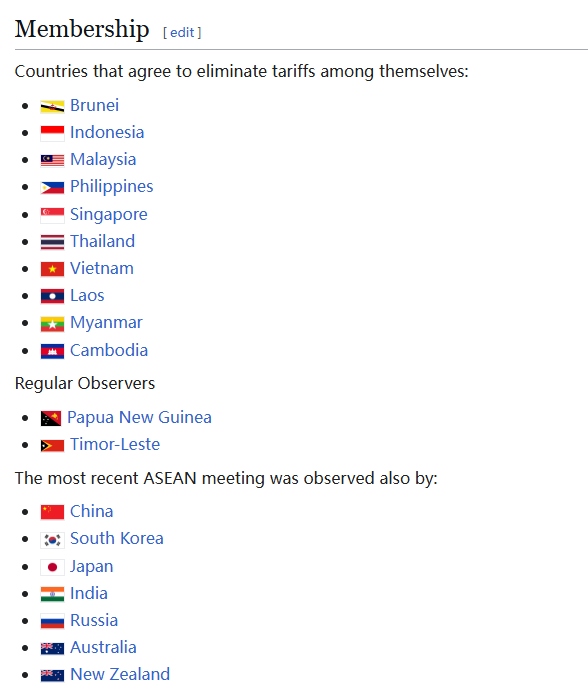The ASEAN Free Trade Area (AFTA), established in 1992, has emerged as a transformative framework for international trade, significantly impacting industries across member countries and their trading partners. For ceramic exporters, particularly those operating in or trading with the ASEAN region, the agreement offers substantial opportunities and challenges. This article explores how AFTA influences ceramic exporters, including tariff reductions, competitive advantages, and market dynamics, while highlighting strategies for leveraging these benefits effectively.
Introduction to AFTA and Its Scope
AFTA is a trade bloc aimed at fostering economic integration among ASEAN members, which include Brunei, Cambodia, Indonesia, Laos, Malaysia, Myanmar, the Philippines, Singapore, Thailand, and Vietnam. The agreement focuses on:

- Reducing Tariffs: Member countries progressively lower or eliminate import duties under the Common Effective Preferential Tariff (CEPT) Scheme.
- Encouraging Intra-ASEAN Trade: By minimizing trade barriers, AFTA boosts the flow of goods within the region.
- Harmonizing Standards: The agreement promotes consistency in regulations and standards to facilitate smoother trade.
For ceramic exporters, these elements provide a dual advantage: cost reductions and improved access to growing markets.
Key Benefits for Ceramic Exporters
1. Reduction in Tariffs
Under AFTA, tariffs for most ceramic products traded between ASEAN countries are either reduced to zero or significantly lowered. This offers a competitive edge to exporters who source raw materials or sell finished goods within ASEAN markets.

2. Access to a Growing Market
ASEAN is home to over 600 million consumers, with a rising middle class and increasing demand for high-quality household goods, including ceramics. Exporters can capitalize on this demand by tailoring their products to the preferences of these consumers.
3. Streamlined Trade Processes
The harmonization of trade standards and simplification of customs procedures under AFTA ensures faster and more efficient movement of goods. For exporters, this translates to lower logistical costs and fewer regulatory hurdles.
Challenges and Considerations
While AFTA offers numerous advantages, exporters must also navigate challenges such as:
- Increased Competition: With reduced trade barriers, exporters face stiff competition from both ASEAN members and non-member countries.
- Adherence to Rules of Origin (ROO): To qualify for tariff benefits, products must meet specific ROO criteria, requiring meticulous documentation.
- Cultural and Consumer Differences: ASEAN countries exhibit diverse tastes and preferences, necessitating market-specific strategies.
Case Study: Comparing Tariff Impacts on Ceramics
The table below demonstrates how tariff reductions influence ceramic exporters trading within ASEAN compared to non-ASEAN markets:
| Factor | Intra-ASEAN Trade | Non-ASEAN Trade |
|---|---|---|
| Average Tariff Rate | 0-5% | 10-20% |
| Customs Clearance Time | 1-2 days | 3-5 days |
| Compliance Requirements | Simplified under AFTA | Varies by country |
| Price Competitiveness | Higher due to lower tariffs | Moderate |
This comparison highlights the tangible benefits of AFTA for ceramic exporters operating within the region.
Strategies for Ceramic Exporters
To maximize the benefits of AFTA, ceramic exporters can adopt the following strategies:
- Understand Rules of Origin: Ensure that products meet the ROO requirements to qualify for tariff reductions.
- Leverage Local Partnerships: Collaborate with distributors and retailers in ASEAN countries to enhance market penetration.
- Invest in Market Research: Study consumer preferences and trends in different ASEAN markets to tailor products accordingly.
- Optimize Supply Chains: Source raw materials from within ASEAN to further reduce costs and improve compliance.
Future Outlook for Ceramic Exporters
The ASEAN region is projected to experience robust economic growth, with an increasing focus on sustainable and innovative products. Ceramic exporters can align with these trends by investing in eco-friendly materials, unique designs, and advanced production technologies.
Moreover, the Regional Comprehensive Economic Partnership (RCEP), which builds upon AFTA, offers an expanded framework for trade across Asia-Pacific, presenting additional opportunities for exporters.
Conclusion
The ASEAN Free Trade Area has significantly reshaped the landscape for ceramic exporters, providing a competitive platform for growth. By capitalizing on reduced tariffs, streamlined trade processes, and a burgeoning market, exporters can enhance their global footprint. However, success requires strategic planning, market adaptation, and compliance with regional regulations.
With its commitment to quality and innovation, EKA stands ready to navigate these opportunities, offering OEM and ODM ceramic solutions tailored to meet the diverse needs of ASEAN and global markets.

